Adventures in Tonga
October 28- November 15th 2006
 The
kingdom of Tonga is a string of South Pacific pearls stretching from 15
degrees south to 21 degrees south around the 175 east meridian. The
chain of islands spans of about 400 miles and is comprised of more than
150 islands. They are divided into three main groups: Tongatapu,
Ha’apai, and Vava’u. About 40 of the islands are inhabited. The
kingdom of Tonga is a string of South Pacific pearls stretching from 15
degrees south to 21 degrees south around the 175 east meridian. The
chain of islands spans of about 400 miles and is comprised of more than
150 islands. They are divided into three main groups: Tongatapu,
Ha’apai, and Vava’u. About 40 of the islands are inhabited.
Tonga was
discovered for the western world by James Cook in 1773. It was on
Cook’s second voyage to the Pacific that he found Tonga. He was
searching for the fabled southern continent and had just completed his
first Antarctic probe. He reached 70 degrees south before he was
stopped by pack ice. After the cold, hardship and depravation of the
Antarctic, Tonga looked very good. Cook was enamored. He bestowed the
name “The Friendly Archipelago” on what is now known as the Kingdom of
Tonga.
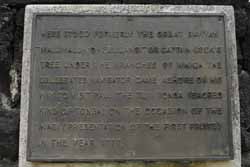
Cooks journal
reads: “We were welcomed ashore by acclamations from an immense crowd
of Men and Women not one of which had so much as a stick in their
hand”. Cook had his men play the bagpipes. In spite of the racket the
islanders remained friendly. Some young women sang “a musical and
harmonious tune” in return. A chief then conducted Cook and his men to
a feast and kava ceremony.
Things have
changed quite a bit since Cook’s time.
The crew of
Mustang Sally was welcomed to the country by the Customs, Immigration
and an Agricultural Inspectors. As each came to the boat, they were
friendly, businesslike and welcomed us to Tonga. The necessary paper
work was done and then we offered juice and cookies. We gave them blank
looks when they asked for rum and other favors. But they seemed
determined we should give them something. Click
here
to see how we finally rid ourselves of the pesky the Tongan inspectors.
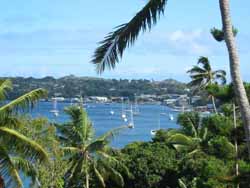 Vava’u
is the major northern island group of Tonga. It is the most
cruiser friendly part of the country. The islands are perfect for line
of site navigation and the distances between the islands are short.
There are 20-30 lovely anchorages within a day or two sail of the main
town of Neiafu. The water is warm, clear and clean. The area is remote
and outback, but has sparse services and enough restaurants to be
comfortable. Vava’u
is the major northern island group of Tonga. It is the most
cruiser friendly part of the country. The islands are perfect for line
of site navigation and the distances between the islands are short.
There are 20-30 lovely anchorages within a day or two sail of the main
town of Neiafu. The water is warm, clear and clean. The area is remote
and outback, but has sparse services and enough restaurants to be
comfortable.
After the very
remote islands in the Cooks and Nuie, Vava’u was a welcome change. Click here for
a picture tour of Neiafu
the capital of the Vava’u area of Tonga.
The Moorings
Charter Company has a seasonal operation based in Neiafu. While Neiafu
is not a modern western port, you can find many conveniences. For
example – the Mermaid Bar!
 The
Mermaid Bar is legendary across the South Pacific. It is a cruiser’s
hangout with a reputation that is known over thousands of miles of
Pacific Ocean. Your first beer there is free for cruisers! Good food,
good music, good friends, good cheer. The Mermaid bar is tops with us. The
Mermaid Bar is legendary across the South Pacific. It is a cruiser’s
hangout with a reputation that is known over thousands of miles of
Pacific Ocean. Your first beer there is free for cruisers! Good food,
good music, good friends, good cheer. The Mermaid bar is tops with us.
The scuba diving
and snorkeling is excellent in Tonga. Click
here to read
about the diving and snorkeling in Vava’u Tonga.
The many shoals
and reefs in the Vava’u area are easily spotted if you sail on sunny
days with the sun behind you. It is important to use the visual clues
as the charts for the area are not very accurate. Click
here for a slide
show of some of the Vava’u water side high lights.
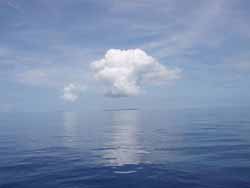 We
enjoyed our time in Tonga’s Vava’u and Hapa’ai island groups. We sailed
through the groups, stopping at remote anchorages. We found some
wonderful deserted islands, no bigger than a city block, but full of
underwater wonders, bright white sand, palms and lush foliage. Click
here to view a few
pictures of the islands. We
enjoyed our time in Tonga’s Vava’u and Hapa’ai island groups. We sailed
through the groups, stopping at remote anchorages. We found some
wonderful deserted islands, no bigger than a city block, but full of
underwater wonders, bright white sand, palms and lush foliage. Click
here to view a few
pictures of the islands.
As we apprached
the southern most group we stoped at the island of Minola. Click
here to see how
beautiful Minola is.
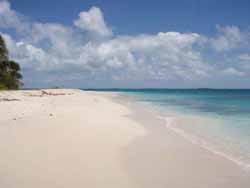 The
southern most island group, Tongatapu and the capital city of Nuka’lofa
became a bit of a challenge for us. In Nuka’lofa we re-provisioned and
prepared for the 1,000 mile passage to New Zealand. The challenge was
related to the political unrest and rioting. The
southern most island group, Tongatapu and the capital city of Nuka’lofa
became a bit of a challenge for us. In Nuka’lofa we re-provisioned and
prepared for the 1,000 mile passage to New Zealand. The challenge was
related to the political unrest and rioting.
We struggled a
bit to get crew for the passage to New Zealand but everyone came
together in Nuka’lofa. Learn about how we got rid of the crew
blues by clicking on
this
link.
Nukalofa is the somewhat gritty capital of Tonga. The town is a
little run down, ramshackle and dirty. But it has a beauty
of its own. Click here to
see some pictures
of Nukalofa.
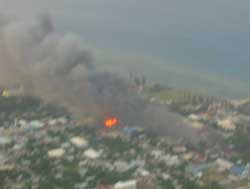 But
what beauty Nukalofa had was besmirched by civil unrest. The
beautiful Tongan people have much work to do to clean up the mess. You
can see some of the results of the violence
here. Angela Krok took all the pictures in this slide show. But
what beauty Nukalofa had was besmirched by civil unrest. The
beautiful Tongan people have much work to do to clean up the mess. You
can see some of the results of the violence
here. Angela Krok took all the pictures in this slide show.
Sharon had
invoked the ‘Princess clause’ in our contract and planned a 3 hour
airline flight from Tonga to New Zealand. She would relax, see friends
in New Zealand and avoid the stress of the passage. Then she would work
her way up to Opua. Opua is the northern New Zealand port of entry
where Mustang Sally would clear into the country.
It would be a bit
of a turtle vs. the hare kinda race. Sharon on the 600 mph jets and Rae
doing maybe 6 or 7 knots on the boat. It turned out to be quite an
adventure. Click here for
Rae’s story.
Click here
for Sharon’s.
For those planning visits to Tonga in the future, we highly recommend
Vava'u and Haa'pai - but suggest minimal time in Nukalofa and Tongatapu.
It will take some time to clean up the political and physical mess.
|



